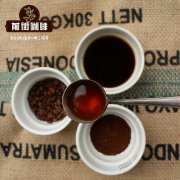Are Yega Sheffield Coffee beans Arabica Coffee beans? introduction to Yega Chefe Coffee producing area

Professional coffee knowledge exchange more coffee bean information please follow the coffee workshop (Wechat official account cafe_style)
Qianjie-introduction to Yega Chuefei Coffee
Ethiopia is the birthplace of the famous Arabica coffee beans, of all the producing areas, Hidamo and Yegashafi are the most outstanding, and people have maintained the tradition of harvesting wild coffee beans. The coffee garden with an elevation of more than 1500 meters has formed a unique coffee style after thousands of years of evolution and adaptation. Ethiopian coffee is mostly washed beans, full-bodied flowers, smooth and subtle, as well as strong chocolate and fruit aromas.
Ethiopian coffee, which grows in the natural wild environment, is called "wilderness coffee". It retains the most primitive and natural taste of coffee beans and has the most direct and full expression of the soil. Because of its rich and complex fruit aroma, it has become an international hit almost overnight, becoming a hot target for experts and expensive.
Most of the coffee in Ethiopia is washed, and now there is more and more sun exposure. The three main coffee producing areas are Sidamo Sidamo, Harrar Harald and Kaffa Kafa, where beans are usually directly named after the place of origin. Yegashafi, for example, is the name of a small town in Sidamo province. Ethiopian coffee beans are characterized by their incredibly mellow thickness and flavor, with endless aftertaste.
Yega Xuefei is a small village in Sidamo province, Ethiopia. In the Ethiopian language, "Yega" yirga means "settle down", and "Chefe" cheffe means "wetland", so Yega Xuefei has a romantic mood-"Let's settle down in this wetland".
At first, Yejassefi's coffee trees were planted by European monks (a bit like Belgian monks growing wheat to brew beer), and later by farmers or cooperatives. Yejia Chuefei is actually constructed by surrounding coffee communities or cooperatives, including Edido Idido, Hafusa Harfusa, Hama Hama and Biloya near Fog Valley Misty valley, all washed with water, but there are also a small number of off-product beans engraved with sun to enhance the charming fruit aroma and mellow thickness. These mountain villages are foggy, like spring all year round, with a gentle breeze in summer, cool but not hot, rain but not damp, and no cold damage in winter, giving birth to a unique regional flavor of citrus and flowers. Coffee trees are mostly planted in farmers' own backyard or mixed with other crops in the field, the yield per household is not much, it is a typical rural coffee.
It will take at least several years to change the flavor of coffee by changing planting and variety. In recent years, in order to promote the new, the major producing areas of the world began to sweep the special treatment, through the treatment to change the flavor of coffee.
Knowledge: the quality of coffee can be changed according to altitude, latitude and soil chemical composition. Growing coffee outside the right range of factors will greatly change the final quality of coffee.
In short: Qianjie is a coffee research hall, happy to share the knowledge about coffee with you, we share unreservedly just to make more friends fall in love with coffee, and there will be three low-discount coffee activities every month. The reason is that Qianjie wants to make more friends drink the best coffee at the lowest price, which has been Qianjie's tenet for 6 years!
END
Important Notice :
前街咖啡 FrontStreet Coffee has moved to new addredd:
FrontStreet Coffee Address: 315,Donghua East Road,GuangZhou
Tel:020 38364473
- Prev

Which country is rich in coffee beans in Africa? which Ethiopian Yega Xuefei Coffee Bean Flower Elf
Professional coffee knowledge exchange more coffee bean information please follow the coffee workshop (Wechat official account cafe_style) front street-Yirgacheffe coffee in Ethiopia, although the body is small, but it is gentle and delicate, sweet and lovely. As the hometown of coffee, thousands of years of planting history and processing tradition in Ethiopia have created high-quality washing.
- Next

Are African coffee beans characterized by wild Yegashev coffee with a dreamy floral scent?
Professional coffee knowledge exchange more coffee bean information please follow the coffee workshop (Wechat official account cafe_style) front street-Yega Xuefei Coffee introduction Ethiopia in Africa is considered to be the birthplace of coffee, but also an important producing area, among which Yega snow coffee located in Sidamo Province is famous and is one of the best coffee producing areas in the world. There are many coffee in Ethiopia.
Related
- Beginners will see the "Coffee pull flower" guide!
- What is the difference between ice blog purified milk and ordinary milk coffee?
- Why is the Philippines the largest producer of crops in Liberia?
- For coffee extraction, should the fine powder be retained?
- How does extracted espresso fill pressed powder? How much strength does it take to press the powder?
- How to make jasmine cold extract coffee? Is the jasmine + latte good?
- Will this little toy really make the coffee taste better? How does Lily Drip affect coffee extraction?
- Will the action of slapping the filter cup also affect coffee extraction?
- What's the difference between powder-to-water ratio and powder-to-liquid ratio?
- What is the Ethiopian local species? What does it have to do with Heirloom native species?

